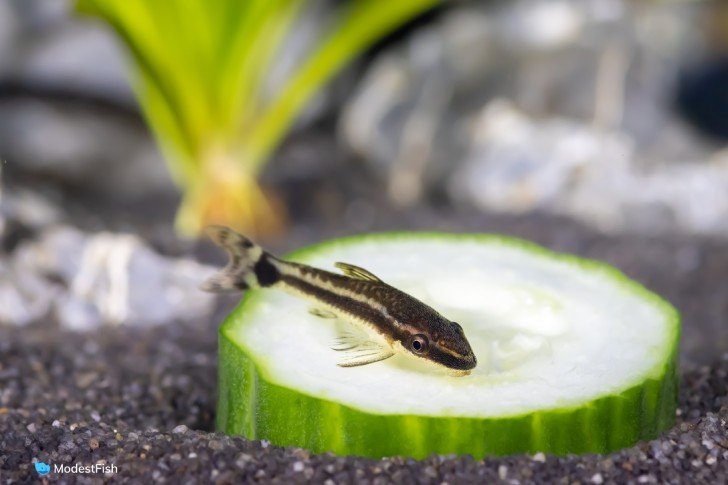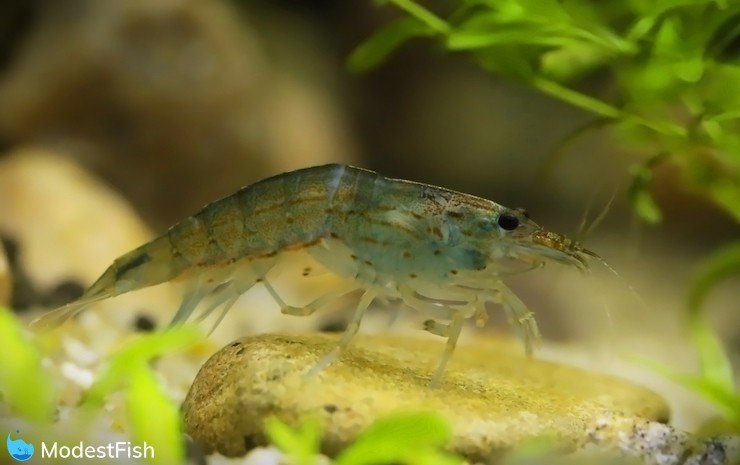Ah pea puffers, so little, so cute, it must be easy to find tank mates for them, right?
Unfortunately, nothing could be farther from the truth. They might look cute, but this species is surprisingly bloodthirsty.
You may think that larger tank mates will be safe since a pea puffer’s mouth is too small for them to gulp other fish whole.
But in reality, pea puffers have four fused teeth at the front of their mouths that form a sharp beak. They will bite chunks of fin and flesh, anything they can get their mouths on, even from tank mates far too big for them to swallow.
So, don’t be fooled, lurking below that adorable appearance is a murderous rage like nothing you’ve ever known.
The Best Pea Puffer Tank Mates Are Pea Puffers

The best pea puffer tank mates are other pea puffers, assuming your tank is big enough.
You need 5 gallons per puffer fish so they can spread out a little bit and establish their own territories. So, you need a 10 gallon (39 liter) for two, a 15 gallon (57 liter) for three, etc..
Pro Tip: Pea puffer tanks should be heavily planted so that the fish can avoid seeing each other constantly, which will help keep things peaceful in the aquarium.
Pea Puffer Male to Female Tank Mate Ratio
Male pea puffers are much more aggressive than females. Having too many in a tank together can lead to serious scuffles, and even fights to the death.
If you want multiple puffers in the tank, it’s best to keep 1 male pea puffer for every 2-3 females. Or even a tank with only females.
This ensures there are plenty of females for each male and spreads the males’ attention over a larger number to fish, so no one female is being overly harassed.
Sexing Pea Puffers
Adult males will have tiny, iridescent blue markings behind their eyes that resemble wrinkles or cracks in their skin.
Males also develop a dark stripe on their bellies that runs from their chin to their anus. They are also usually a brighter yellow than females, who appear more olive.
Females also have a rounder abdomen than males and are overall a little more drab than the males. Their bellies are usually pale yellow or white.
But Here’s the Catch
The biggest hassle to getting the male to female ratio right in your tank is that it can be very difficult, if not impossible, to correctly sex pea puffers before they’re fully mature. Most become sexually mature when they are 6-12 months old.
But, the puffers you see in stores are tiny juveniles that have not yet developed sexual characteristics.
You may have to buy a group of puffers, let them mature and then rehome males if you end up with too many.
Best Non-Puffer Tank Mates
There are very few non-puffer tank mates that will work with pea puffers. And the puffers may still turn on tank mates. It all depends on the personality of the individual fish and whether or not they are overly aggressive.
Oto Cats

Online, there are many different accounts of aquarists successfully keeping otocinclus catfish with pea puffers.
However, in my opinion, otocinclus need to be in at least a 20 gallon (76 liter) tank because they need lots of surface area with algae.
These little fish need to be kept in a group of at least five and they are the most voracious algae eaters I’ve ever seen. They’re actually pretty darn amazing.
They will end up starving to death in a tank that is too small, there just won’t be enough algae for them to munch on throughout the day.
But, if you do have the room for them, I highly recommend these little guys. Not only are they the best algae eating fish, in my opinion, they’re also super cute and fun to watch.
Pro Tip: It has been reported that most pea puffers simply ignore oto cats, but be prepared to move the catfish if the puffer starts to go after them.
Larger Shrimp

Some folks have also had luck mixing larger shrimp species, like glass shrimp and Amanos, with pea puffers.
Glass shrimp are great for cleaning up uneaten food and Amanos are fantastic algae eaters, even eating tough pest algaes like black beard and staghorn algae.
I would definitely keep a close eye on the shrimp, though, and move them to another tank if you see signs of pea puffer aggression.
Final Thoughts
Pea puffers are unique fish that make really enjoyable pets. But, it can be a real challenge to add tank mates to their aquarium.
These puffer fish are adorable, they look like happy little bumblebees hovering around the tank, but that is just a front and they are in fact stone cold killers bent on destruction.
They will bite chunks out of larger tank mates and harass them until they die, with no remorse I might add. So, picking tank mates is a real challenge.
Your best bets for adding other critters to the tank are otocinclus catfish or some of the larger species of ornamental shrimp.
But even then, be prepared to move tank mates if the pea puffers start to nibble them to death.
Both the oto cats and the shrimp will help act as a clean up crew, eating algae and uneaten food, which is an added bonus.
I hope you find this information helpful.
I wish you and your fish the very best.
